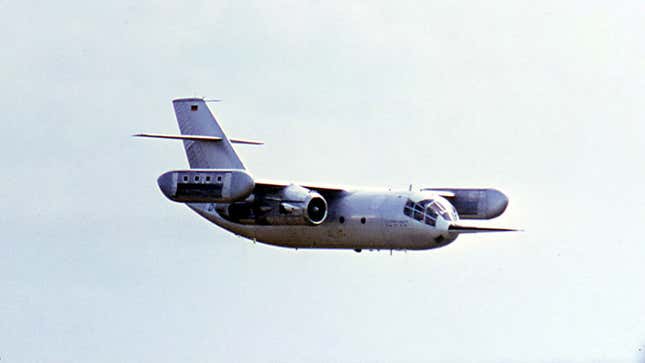
West Germany did its best to introduce a jet transport that could take off and land within its own footprint. They called it the Dornier Do 31. It never ultimately made it, but damn was it a good shot.
During the Cold War, the obsession with severing jet aircraft from the runways they took off from and landed on Runways were prime targets and their destruction would all but prevent retaliation.
West Germany felt that problem most acutely, with its rapid industrialization making space a premium for runway construction and the lack of strategic depth from the Iron Curtain meant existing runways were vulnerable.
The West German Air Force’s first solution to this problem was turning its Autobahn network into a set of makeshift runways. That was a partial answer though. Autobahns could be targeted as well, even though it is pretty rad to see A-10 Warthogs taking off and landing from them.
That’s where vertical take-off and landing (VTOL) came in. The West German Air Force planned to convert as much of its fleet as possible to the technology, essentially making its ability to react to potential Soviet aggression non-reliant on vulnerable airfields. The case for new planes that could pull this off was clear, but there was also the challenge of developing them.
Youtube’s Mustard has put together a really phenomenal video on how West Germany and Dornier worked on both fighter and transport aircraft that could combine the VTOL capabilities of helicopters and the speed and performance of jets.
While the fighter never really materialized, the transport, known as the Dornier Do 31, did manage to make it off the ground. Ultimately, though, challenges with weight and noise and difficulty finding development partners were too much and the project folded by 1970. The Americans weren’t interested in helping, and figuring out how to quiet them down enough for civilian use was just too difficult.
Since then, VTOL fighters like the F-35B and transport aircraft like the V-22 Osprey provide much of the capabilities that West Germany had set its sights on back during the Cold War. Still, though these aircraft are in service, they haven’t been without problems of their own. Perhaps someday VTOL technology will be implemented in an effective, reliable, and economical machine that will allow us civilians to finally break free of the runway too. Until then, we’ll have to settle for what we’ve got.